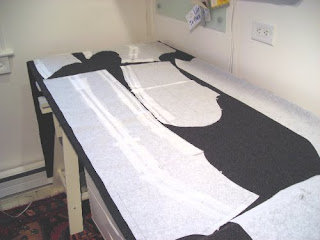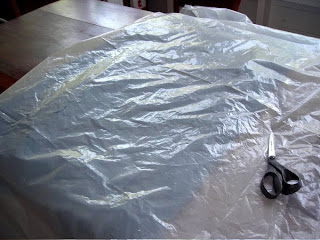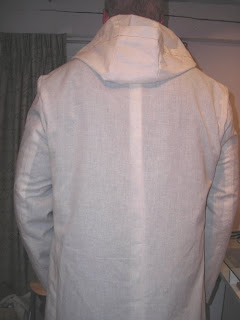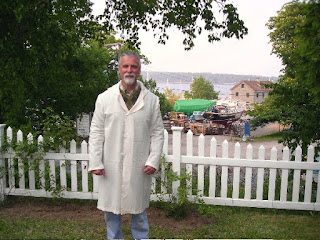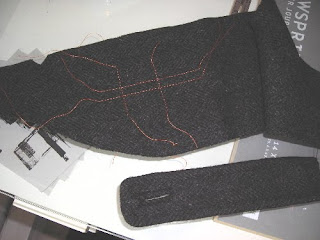



I was really hoping today would rain so I could make some headway on this project. I managed to get several of the design details finished. I made the pocket flaps which are lined with black satin and interfaced with the hair canvas. Then I moved on to the yoke which is lined with black flannel. It will be topstitched directly onto the coat once the fronts and back are connected. The real challenge of the day was to make the tabs at the sleeve cuffs. Because my sewing machine makes cheesy looking buttonholes I decided to make bound buttonholes per Edna Bishop. I'm not going to bore you with all the details, I'm sure there are plenty of instructions on the internet. If anything, I hope I can encourage you to try them. Hey, if I can do it..... While I was working on them I realized that details like this are why I'm taking on this project in the first place. It's all about having something unique, with an attention to detail that I would never be able to afford. The next step will be to construct the pockets, but I have a question out to the Pattern Review message board that I'd like to have answered before I launch out on my own. I really don't want to screw them up.


